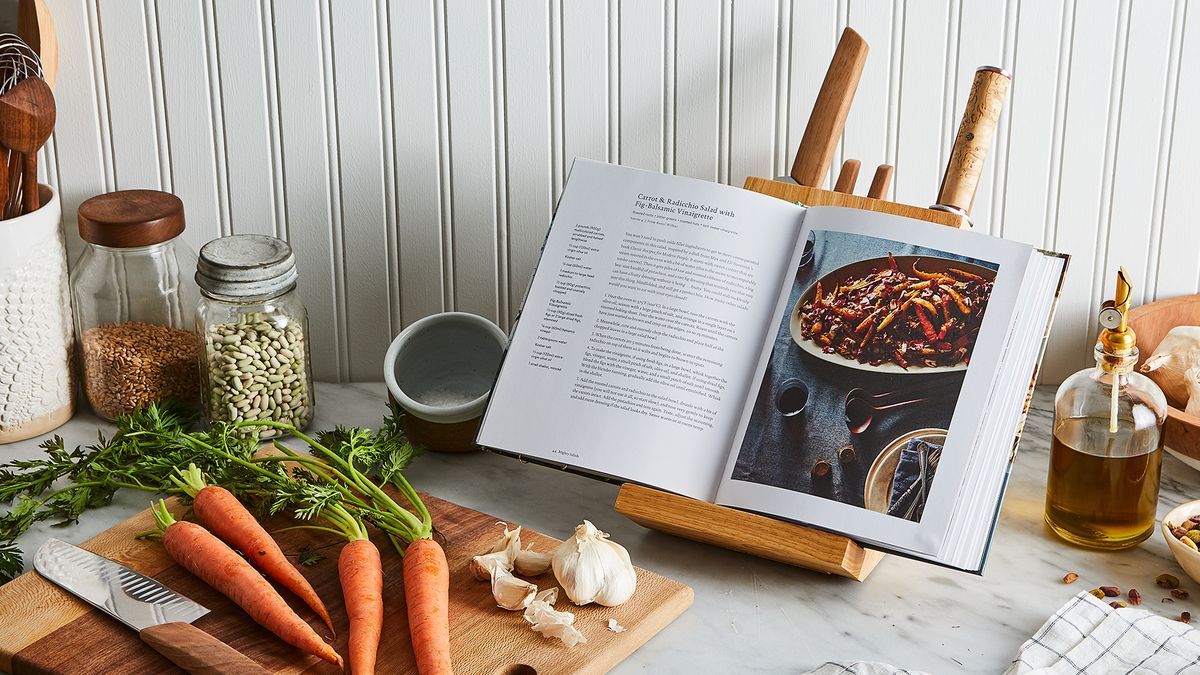A Quick Roadmap for Publishing Cookbooks

Publishing a cookbook is a gratifying and multifaceted journey that allows individuals to share their culinary passion, creativity, and expertise with a broader audience. Whether you are a seasoned chef, a dedicated food blogger, or an enthusiastic home cook, creating a cookbook is a way to preserve and disseminate your unique culinary creations. This endeavor not only highlights your recipes but also your stories, techniques, and the cultural heritage behind each dish.
A well-crafted cookbook goes beyond just a collection of recipes; it is a narrative that connects with readers, guiding them through the art and science of cooking. From conceptualizing the theme and developing recipes to designing the layout and marketing the final product, each step requires meticulous attention and creativity. The rewards are significant, ranging from establishing credibility and expanding your audience to generating revenue and achieving personal satisfaction.
For professional chefs, a cookbook can solidify their status as culinary authorities, attract new customers to their restaurants, and open doors to media appearances and endorsements. Food bloggers can enhance their personal brand, engage more deeply with their audience, and explore new monetization opportunities. Home cooks have the chance to document and share their treasured recipes, preserve family traditions, and potentially transition into a professional culinary career.
This guide provides a comprehensive overview of the cookbook publishing process, offering practical tips and insights to help you navigate each stage. Whether your goal is to publish traditionally or self-publish, understanding the nuances of recipe development, food testing, writing, design, and marketing will empower you to produce a cookbook that resonates with readers and stands the test of time.
Below are the steps to follow in publishing cookbooks:
1. Planning and Research
Define Your Concept
Defining your concept is the first crucial step in cookbook publishing. It involves identifying a clear and cohesive theme that ties your recipes together, reflects your culinary style, and resonates with your target audience. Whether it’s focusing on a specific cuisine, dietary approach, or cooking technique, a well-defined concept provides direction and purpose, guiding the development and organization of your cookbook. By establishing a strong concept, you ensure that your cookbook stands out, appeals to readers, and effectively conveys your unique culinary perspective.
Niche and audience. Identify the target audience (e.g., vegan, gluten-free, quick meals for busy professionals).
Unique selling proposition (USP). What makes your cookbook unique? Perhaps it’s a family collection, regional cuisine, or health-focused recipes.
Research the Market
Researching the market is essential in the cookbook publishing process. This step involves analyzing current trends, identifying gaps, and understanding the preferences of your target audience. By studying successful cookbooks, assessing your competition, and gathering insights on what readers are looking for, you can tailor your content to meet market demands and ensure your cookbook stands out. Effective market research helps you craft a compelling, relevant, and competitive cookbook that appeals to a broad audience.
Competitive analysis. Look at similar cookbooks in your niche. What are their strengths and weaknesses?
Trends. Identify current food trends that could influence your content.
2. Content Development
Recipe Creation
Recipe creation is the heart of your cookbook, where your culinary ideas come to life. This step involves developing original and delicious recipes that align with your concept and appeal to your target audience. It requires experimenting with ingredients, perfecting techniques, and ensuring each recipe is unique, flavorful, and reliable. Crafting clear, detailed instructions and testing for consistency are crucial to ensure your readers can easily recreate your dishes. Through thoughtful recipe creation, you provide readers with valuable, enjoyable, and inspiring cooking experiences.
Testing. Each recipe should be tested multiple times to ensure accuracy and consistency.
Details. Include precise measurements, cooking times, and step-by-step instructions.
Writing and Editing
Writing and editing are critical stages in the cookbook creation process, transforming your culinary ideas into engaging and clear content. This involves crafting detailed, easy-to-follow instructions, compelling headnotes, and informative tips that enhance the reader’s cooking experience. Editing ensures that your text is polished, free of errors, and consistent in tone and style. Thorough writing and meticulous editing ensure your cookbook is professional, reader-friendly, and a joy to use in the kitchen.
Voice and style. Maintain a consistent voice throughout the book. Decide if your tone will be formal, casual, instructional, or narrative.
Edit ruthlessly. Ensure clarity, accuracy, and readability. Consider hiring a professional editor.
Photography
Photography is a vital element of cookbook publishing, bringing your recipes to life through vibrant, enticing images. High-quality photos not only showcase the final dishes but also capture the preparation process, highlighting key steps and techniques. Effective food photography enhances the visual appeal of your cookbook, engaging readers and inspiring them to try your recipes. Investing in professional, well-styled images ensures your cookbook is visually appealing and helps convey the deliciousness and creativity of your culinary creations.
High-quality images. Invest in professional food photography. Images are crucial for a cookbook’s appeal.
Styling. Food styling is important to make dishes look appetizing. Consider hiring a stylist if needed.
3. Design and Layout
Cover and Interior Design
Cover and interior design are essential components of a successful cookbook, creating an appealing and cohesive visual experience. The cover design draws readers in, making a strong first impression with compelling imagery and typography that reflects your cookbook’s concept. Interior design ensures that the layout is user-friendly, with clear recipe formats, attractive fonts, and engaging visuals that enhance readability and enjoyment. Thoughtful design elevates the overall aesthetic of your cookbook, making it both functional and beautiful.
Professional design. Hire a graphic designer to create an appealing cover and layout that enhances readability and visual appeal.
Typography and colors: Choose fonts and color schemes that match the theme of your book.
Organizing Content
Organizing content is a crucial step in creating a coherent and accessible cookbook. This involves structuring your recipes and other materials into logical sections or chapters, ensuring a smooth flow and easy navigation for readers. Thoughtful organization enhances the user experience, making it simple for readers to find and follow recipes. Clear headings, an intuitive layout, and a comprehensive index all contribute to a well-organized cookbook that is both practical and enjoyable to use.
Table of contents. Clearly organize recipes into logical sections (e.g., appetizers, mains, desserts).
Index. Include a comprehensive index for easy reference.
4. Publishing Options
Traditional Publishing
Traditional publishing involves working with established publishing houses to bring your cookbook to market. This process includes submitting proposals, negotiating contracts, and collaborating with professional editors, designers, and marketers. Traditional publishers provide valuable resources such as editorial expertise, high-quality design, extensive distribution networks, and marketing support. While the process can be competitive and may take longer, traditional publishing can offer significant advantages in terms of credibility, reach, and overall production quality.
Proposal. Write a compelling book proposal if you’re seeking a traditional publisher. Include a synopsis, sample recipes, and your marketing plan.
Literary agent. Consider finding an agent to help pitch your book to publishers.
Submission. Submit to publishing houses that specialize in cookbooks.
Self-Publishing
Self-publishing allows you to independently bring your cookbook to market, giving you full creative control over every aspect of the process. This includes writing, editing, designing, and marketing your book. While self-publishing requires a significant investment of time and resources, it offers the flexibility to maintain your vision and potentially earn higher royalties. With the advent of digital platforms and print-on-demand services, self-publishing has become a viable and increasingly popular option for many authors looking to share their culinary creations with a wider audience
Platform. Choose a self-publishing platform (e.g., Amazon Kindle Direct Publishing, IngramSpark).
ISBN and copyright. Obtain an ISBN and register your copyright.
Print vs. digital. Decide whether to publish a print version, an e-book, or both.
5. Marketing and Promotion
Prelaunch
The prelaunch phase is crucial for building anticipation and preparing for a successful cookbook release. This stage involves finalizing your manuscript, completing the design and layout, and setting up distribution channels. Additionally, prelaunch activities include marketing efforts such as creating a buzz on social media, securing reviews, and engaging with your audience through email campaigns and promotional events. A well-executed prelaunch strategy ensures that your cookbook gains visibility, generates excitement, and reaches a wide audience upon release.
Build an audience. Use social media, a blog, or a newsletter to build a following before your book is released.
Teasers. Share sneak peeks, sample recipes, and behind-the-scenes content.
Launch
The launch phase marks the official release of your cookbook to the public. This exciting stage involves implementing your marketing plan to maximize visibility and sales. Activities may include hosting book signings, cooking demonstrations, and media appearances to generate buzz and attract attention. Leveraging social media, email lists, and promotional partnerships can help drive traffic to your book’s sales channels. A successful launch sets the tone for your cookbook’s success and lays the foundation for ongoing sales and promotion efforts.
Events. Host launch events, book signings, and cooking demos.
Press kit. Prepare a press kit with a press release, author bio, and high-resolution images.
Postlaunch
The postlaunch phase is a critical period for sustaining momentum and maximizing the impact of your cookbook. This stage involves engaging with your audience through continued marketing efforts, such as social media promotion, email newsletters, and collaborations with influencers or other authors. Monitoring sales and gathering feedback from readers allows you to make adjustments and refine your promotional strategies. Additionally, exploring opportunities for speaking engagements, cooking demonstrations, and media appearances can help extend the reach of your cookbook and maintain interest over time. By staying proactive and adaptive in the postlaunch phase, you can ensure the long-term success and visibility of your cookbook.
Reviews and testimonials: Solicit reviews from food bloggers, critics, and readers.
Ongoing promotion. Continue promoting your book through social media, collaborations, and seasonal campaigns.
Additional Tips
Legal and financial aspects. Navigating the legal and financial aspects of cookbook publishing is essential for protecting your rights and ensuring a successful venture. This phase involves understanding copyright laws, securing permissions for use of recipes or images, and negotiating contracts with publishers, agents, or collaborators. Additionally, managing finances includes budgeting for production costs, setting pricing strategies, and tracking sales and royalties. Addressing these legal and financial considerations early on helps safeguard your intellectual property and maximize your profitability in the publishing process.
Time management. Effective time management is crucial throughout the cookbook publishing process to ensure deadlines are met and tasks are completed efficiently. This involves prioritizing tasks, setting realistic timelines, and allocating dedicated blocks of time for writing, recipe testing, editing, and other essential activities. Utilizing tools such as calendars, to-do lists, and project management software can help you stay organized and on track. By effectively managing your time, you can navigate the complexities of cookbook publishing while maintaining balance and focus on your other commitments and responsibilities.
Networking. Networking is a vital aspect of cookbook publishing, allowing you to build connections and collaborate with industry professionals, fellow authors, and potential partners. This involves attending culinary events, joining professional organizations, and engaging with your community both online and offline. Networking provides opportunities to share knowledge, gain valuable insights, and access resources that can enhance your cookbook publishing journey. By cultivating relationships and fostering collaboration, you can expand your reach, amplify your message, and establish a strong presence in the culinary world.
Benefits of Cookbook Publishing for Chefs
Cookbook publishing holds a multitude of benefits for chefs, transcending their culinary expertise into tangible creations that extend far beyond the confines of their kitchens. For chefs, the decision to publish a cookbook is more than just sharing recipes — it’s an opportunity to establish their culinary legacy, expand their professional horizons, and connect with a global audience.
Whether you’re a seasoned Michelin-starred chef or an up-and-coming culinary innovator, the decision to publish a cookbook can be a transformative step in your culinary journey.
Establishing expertise and credibility. A published cookbook solidifies a chef’s status as a culinary authority, garnering recognition and respect within the industry.
Expanding audience and reach. Through a cookbook, chefs can reach a broader audience beyond the confines of their restaurant, sharing their culinary vision with enthusiasts around the world.
Financial benefits. Cookbook sales and royalties provide chefs with additional revenue streams, while increased visibility can lead to lucrative consulting and endorsement opportunities.
Creative expression. A cookbook allows chefs to showcase their creativity, innovation, and culinary philosophy through carefully curated recipes and engaging storytelling.
Networking and collaboration. Cookbook publishing opens doors to collaborations with publishers, photographers, and fellow chefs, expanding professional networks and fostering new opportunities for growth.
Educational impact. Cookbooks serve as valuable educational resources, inspiring aspiring chefs and home cooks to hone their skills and explore new culinary horizons.
Benefits of Cookbook Publishing for Food Bloggers
For food bloggers, cookbook publishing represents an exciting opportunity to elevate their culinary brand, engage with their audience on a deeper level, and establish themselves as authorities in the culinary world. Beyond the digital realm of blogs and social media, a cookbook offers a tangible platform for bloggers to share their passion for food and connect with readers in a more intimate and enduring way.
Expanding audience and reach. A cookbook allows food bloggers to reach a broader audience beyond their online platform, tapping into new markets and demographics.
Enhancing brand recognition. By publishing a cookbook, food bloggers can strengthen their brand identity and establish themselves as authorities in the culinary world.
Diversifying revenue streams. Cookbook sales, royalties, and related products offer food bloggers additional revenue streams, complementing their existing income from blogging and sponsorships.
Creative expression. Cookbooks provide food bloggers with a platform to showcase their creativity, culinary expertise, and unique perspective on food and cooking.
Community engagement. Through a cookbook, food bloggers can deepen their connection with their audience, fostering a sense of community and loyalty among their readers.
Professional opportunities. Cookbook publishing opens doors to new professional opportunities, including media appearances, speaking engagements, and collaborations with food brands and publishers.
Benefits of Publishing Cookbooks for Home Cooks
Cookbook publishing offers a wealth of benefits for home cooks, providing them with a platform to share their culinary creativity, preserve family traditions, and inspire others to explore the joys of cooking. Whether you’re a passionate home cook with a treasure trove of beloved recipes or someone who simply loves to experiment in the kitchen, the decision to publish a cookbook can be a rewarding and transformative endeavor.
Preserving family traditions. A cookbook allows home cooks to document and preserve cherished family recipes and culinary traditions for future generations to enjoy.
Sharing culinary creativity. Cookbook publishing provides a platform for home cooks to share their unique culinary creations, from tried-and-true classics to innovative new dishes.
Inspiring others. Through a cookbook, home cooks can inspire others to explore the joys of cooking, experiment with new ingredients and techniques, and create delicious meals to share with family and friends.
Personal satisfaction. Seeing your recipes in print and knowing that they are being enjoyed by others can bring a deep sense of personal satisfaction and fulfillment.
Expanding culinary skills. The process of developing and testing recipes for a cookbook can help home cooks expand their culinary skills and knowledge, from mastering new techniques to learning about different cuisines and ingredients.
Community engagement. Cookbook publishing can foster a sense of community among home cooks, as they connect with others who share their love of food and cooking.
Embarking on the journey of publishing a cookbook is an enriching and fulfilling experience that allows you to share your culinary passion with the world. Whether you are a professional chef, a food blogger, or an avid home cook, creating a cookbook is a remarkable way to preserve and celebrate your unique recipes, techniques, and stories.
Your cookbook will become a legacy, a testament to your love for cooking, and a source of inspiration for countless others. It will connect you with a broader audience, create new opportunities, and potentially lead to exciting ventures in the culinary world. Whether you aim to publish traditionally or self-publish, the skills and knowledge you gain through this journey will be invaluable.
Publishing with Milton and Hugo adds another layer of quality and professionalism to your cookbook. Milton & Hugo offers high-quality printing options, giving your work a competitive edge in the self-publishing market and helping you establish your name in the literary world. Our team of experienced self-publishing professionals is dedicated to guiding you through the complex process of self-publishing to ensure a smooth and rewarding experience.
With Milton & Hugo, you can trust that your self-publishing journey is in good hands. We are committed to helping you reach your true writing potential, providing all the tools and expertise needed to publish and market your book successfully. Choose Milton & Hugo, and take a significant step towards your writing success.




